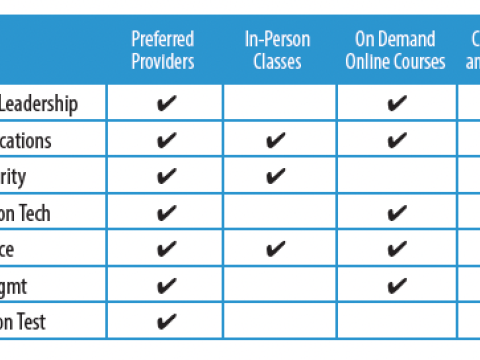President's Commentary: Stop Raiding the Training Cookie Jar
My concern is that some of the military’s best technical capabilities could be unavailable or degraded. To counter this, a renewed effort to double down on mission-oriented training is needed.
Our next adversary likely will use far more sophisticated technologies against our command, control, communications, intelligence, surveillance and reconnaissance capabilities than the Taliban, al-Qaida and the Islamic State of Iraq and the Levant have employed. U.S. armed forces will face significant radio jamming, cyber attacks, misinformation, elaborate deception operations and denial of access to radio frequency spectrum. My concern is that some of the military’s best technical capabilities could be unavailable or degraded. To counter this, a renewed effort to double down on mission-oriented training is needed.
Today’s era reminds me of the 1980s, when U.S. forces were prepared to operate in a contested environment in which the Soviets had state-of-the-art space assets to detect troop movements and monitor capabilities. Soviet doctrine called for a heavy dose of electronic combat. Now warfighters are faced with shrinking usable radio frequency spectrum, sophisticated weapons of mass destruction, multiple threats to U.S. space assets, a more advanced information environment and a rapidly developing and complex cyberthreat.
Over time, Russia, China, North Korea and others have developed new offensive capabilities or improved upon old ones. Witness Russia’s use of jamming and cyber effects accompanied by artillery barrages in Ukraine.
Meanwhile, we have experienced a period of budget austerity that adversely affects training. The budget is typically appropriated in current year dollars, making it a lucrative target for cuts. Additionally, new technical methods of training often carry a price tag that fares poorly during budget negotiations. Too often, training gets short shrift when competing with other bills, creating a cumulative negative effect on readiness.
Individual and small-unit leadership, along with highly trained specialty skills, undoubtedly will be key factors in future operations in a contested environment. Comprehensive training and the commander’s skillfully crafted intent and mission orders allow forces to better understand and execute their assigned tasks and provide a concomitant increase in preparedness. In short: training drives readiness.
One of the U.S. military’s advantages is that our troops—small-unit leaders, in particular—are well-trained and taught to seize the initiative and carry out the mission, regardless of circumstances. But only with proper leadership and training can they be fully prepared to seize that initiative and prevail, especially when their technological advantage disappears. The best-trained soldiers, sailors, airmen and Marines will carry the day, should troops need to operate in denied or contested spaces.
Training can be improved in several ways, namely through more effective application of advanced tools and technologies. Breakthroughs in modeling, simulation, gaming and supporting technologies allow forces to train virtually anywhere, anytime, including on desktops or mobile devices. Collaborative training tools let students learn from one another. Rotating units can train together online, improving situational awareness and sharing valuable lessons learned from actual scenarios.
While we employ these capabilities to some degree, we can expand and improve their adoption, particularly in ground combat training. In many cases, better training tools can serve as dual-use capabilities for training and for operations. Specifically, greater use of decision support tools allows forces to more effectively prepare for the mission in a denied radio frequency situation.
These tools also can provide a level of efficiency whereby scheduling, organizing and traveling to field-training sites can be more efficiently allocated or eliminated. A business approach to training efficiency may reveal interesting results.
It is imperative to train—and train effectively—in the same denied and degraded environment our forces likely will face. Leaders must be provided the tools to make training as realistic as possible. Training must be embedded early, not tacked on haphazardly, and training support needs to be preserved in the budgeting process.
The importance of training and education is highly touted, but it is also often under-resourced. It is time to stop raiding the cookie jar and deliver the training support tools needed to accomplish the mission. Set the training bar high!




Comments